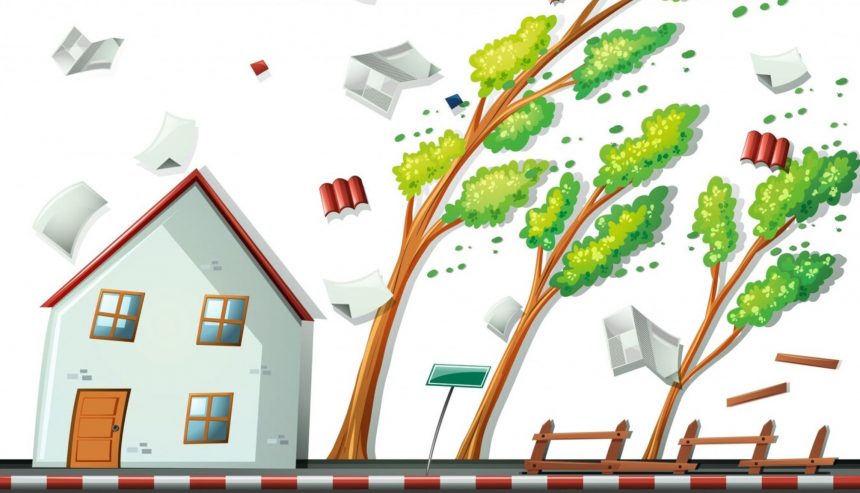What to Do When a Tree Falls on Your House During a Storm
Table of Contents
A severe storm can bring heavy rain, strong winds, and even falling trees that may damage your home. If a tree crashes onto your roof, it can be a terrifying and overwhelming experience. Knowing what steps to take immediately can help keep you and your family safe while minimizing further damage.
In this guide, we’ll walk you through the essential actions to take if a tree falls on your house during a storm, including:
- Ensuring Everyone’s Safety
- Assessing the Damage
- Contacting Emergency Services and Utility Companies
- Documenting the Damage for Insurance
- Finding Temporary Shelter if Needed
- Hiring Professionals for Cleanup and Repairs
- Preventing Future Tree-Related Disasters
Let’s dive into each step in detail.
1. Ensure Everyone’s Safety
The first and most critical step is to make sure everyone inside the house is safe.
Evacuate if Necessary: If the tree has caused significant structural damage (e.g., a collapsed roof or walls), leave the house immediately. Falling debris or electrical hazards (if power lines are involved) can be life-threatening.
Check for Injuries: Administer first aid if needed and call emergency services for serious injuries.
Avoid Dangerous Areas: Stay away from rooms where the tree has caused damage, as ceilings or walls could collapse further.
If the damage is minor and the structure seems stable, you may stay inside while taking precautions.
2. Assess the Damage
Once you’ve confirmed everyone is safe, carefully evaluate the extent of the damage.
Look for Structural Issues: Check for cracks in walls, sagging ceilings, or broken support beams.
Inspect for Gas Leaks or Electrical Hazards: If you smell gas or see sparking wires, leave immediately and call the utility company.
Check for Water Leaks: A fallen tree may puncture the roof, leading to water damage. Place buckets under leaks if safe to do so.
Do not attempt to remove the tree yourself—this can be extremely dangerous, especially if power lines are entangled.
3. Contact Emergency Services and Utility Companies
Depending on the severity of the situation, you may need to call:
911 or Local Emergency Services: If someone is injured or the house is unstable.
The Fire Department: If there’s a risk of fire or gas leaks.
Utility Companies: If power lines are down, contact the electric company immediately. Never touch downed wires—they may still be live.
Utility crews will secure the area before any cleanup can begin.
4. Document the Damage for Insurance Claims
Before making any repairs, document everything for your insurance claim.
Take Photos and Videos: Capture multiple angles of the fallen tree, roof damage, and any interior damage.
Write Detailed Notes: Record the date, time, and weather conditions during the incident.
Keep Receipts for Emergency Repairs: If you need to pay for temporary fixes (e.g., tarping the roof), save all receipts.
Contact your homeowner’s insurance provider as soon as possible to start the claims process.
5. Find Temporary Shelter if Necessary
If your home is uninhabitable, you may need to stay elsewhere while repairs are underway.
Check Your Insurance Policy: Some policies cover temporary housing (like hotel stays) under “loss of use” coverage.
Stay with Family or Friends: If possible, arrange to stay with loved ones while assessing long-term solutions.
Contact Local Disaster Relief Organizations: Groups like the Red Cross may offer assistance in emergencies.
6. Hire Professionals for Cleanup and Repairs
Removing a fallen tree and repairing a damaged house is not a DIY job. You’ll need experts such as:
Tree Removal Services: Certified arborists can safely cut and remove the tree without causing further damage.
Roofing Contractors: A professional roofer will assess and repair structural damage.
General Contractors: If walls, windows, or support beams are affected, a contractor can oversee major repairs.
Always verify that the companies you hire are licensed and insured.
7. Preventing Future Tree-Related Disasters
Once your home is restored, take steps to prevent this from happening again:
Inspect Trees Regularly: Look for signs of disease, rot, or weak branches.
Trim Overhanging Branches: Remove limbs that could break off during a storm.
Remove Hazardous Trees: If a tree is too close to your house or appears unstable, consider professional removal.
Reinforce Your Roof: Impact-resistant roofing materials can better withstand falling debris.
Final Thoughts
A tree falling on your house is a stressful and dangerous situation, but staying calm and following these steps can help you manage the crisis effectively. Prioritize safety, document everything for insurance, and rely on professionals for cleanup and repairs.
If you live in an area prone to storms, consider proactive measures like tree maintenance and roof reinforcements to reduce future risks.



